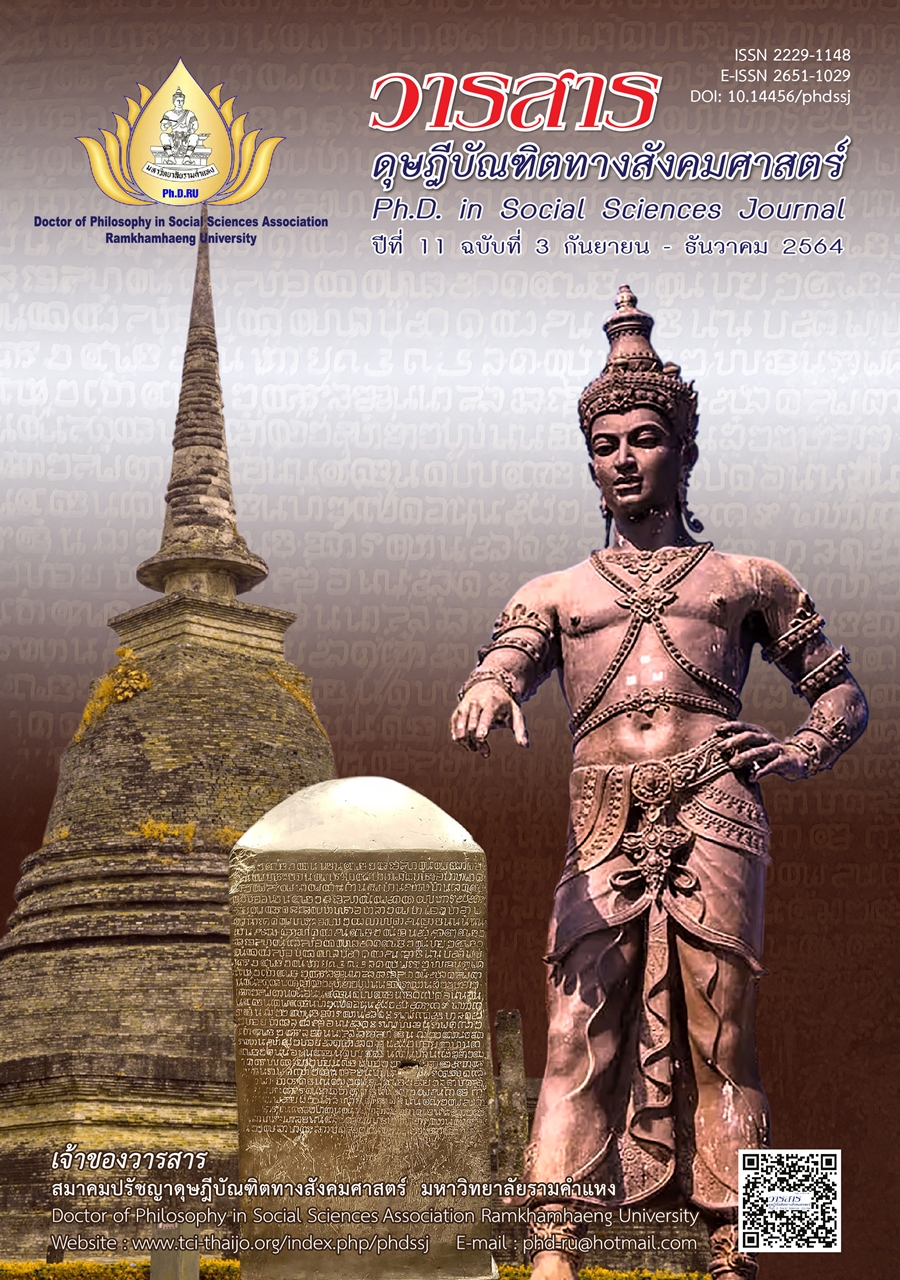Sustainable Success of Seafood Processing Industry in Thailand
Main Article Content
Abstract
The purposes of this article were (1) to study the influences of corporate social responsibility and environmental responsibility on managerial effectiveness, (2) to study the influence of management process consisting of planning, organizing, leading, and controlling on managerial effectiveness, (3) to study the influence of market orientation comprising customer orientation and competitor orientation on market responsiveness, and (4) to study the influences of managerial effectiveness and market responsiveness on sales growth. The population of this study was the seafood processing juristic entities in the seafood processing industry. The researcher selected 400 sample units using simple random sampling. The usable questionnaires were 381. The researcher used LISREL program to test the hypotheses.
The results suggested that social responsibility, planning, leading, and controlling had positive influences on managerial effectiveness. With regard to customer orientation and competitor orientation, the researcher found that both had positive influences on market responsiveness. Both managerial effectiveness and market responsiveness had positive influences on sales growth. Regarding the goodness of fit indices of the structural model, SRMR was equaled to 0.08 (the criterion was 0.08) and CFI was 0.91, which was sufficient to say that the model had a good fit.
Article Details
Academic articles, research articles, and book reviews in the Ph.D. in Social Sciences Journal are author’s opinions, and not the publisher’s, and is not the responsibility of the Ph.D. in Social Sciences Journal Philosophy Association, Ramkhamhaeng University. (In the case that research is done on human, the researcher has to be trained in Ethics for Doing Research on Human Training and has to produce the evidence of the training).
References
Bagozzi, R., & Yi, Y. (1988). On the evaluation of structural equation models. Journal of the Academy of Marketing Sciences, 16(1), 74-94.
Bennett, R. D., & Langford, V. (1983). Managerial effectiveness. In A. P. O. Williams (Ed.), Using personnel research (pp. 61-84). Gower Press.
Barney, J. (1991). Firm resources and sustained competitive advantage. Journal of Management, 17(1), 99-120.
Brundtland, H. (1987). Our common future. Oxford, England: Oxford University Press.
Department of Fisheries. (2017). Frozen Shrimp product on department of fisheries. Retrieved from http://www4.fisheries.go.th/local/file_document/20170120161723_file.pdf [In Thai]
Department of Industry Works. (2018). Industry statistics. Retrieved from http://www.diw.go.th/hawk/content.php?mode=spss60 [In Thai]
Field, A. (2005). Discovering statistics using SPSS (2nd ed.) Sage.
Gillespie, N. A., & Mann, L. (2004). Transformational leadership and shared values: The building blocks of trust. Journal of Managerial Psychology, 19(6), 588-607.
Griffin, R. (2016). Fundamentals of management (8th ed.). Cengate Learning.
Gupta, S., Dangayach, G. S., Singh, A. K., & Rao, P. N. (2015). Analytic Hierarchy Process (AHP) model for evaluating sustainable manufacturing practices in Indian electrical panel industries. Procedia-Social and Behavioral Sciences, 189, 208-216.
Hair, J. F., Jr., Black, W. C., Babin, B. J., & Anderson, R. E. (2014). Multivariate data analysis (7th ed.). Pearson.
Hooper, V. A. (2006). The impact of the alignment between information systems and marketing on business performance. Retrieved from https://core.ac.uk/download/pdf/41335743.pdf
Hu, L., & Bentler, P. (1998). Fit indices in covariance structure modeling: Sensitivity to under parameterized model misspecification. Psychological Methods, 3(4), 424-453.
Im, S., Hussain, M., & Sengupta. S. (2008). Testing interaction effects of the dimensions of market orientation on marketing program creativity. Journal of Business Research, 61(8), 859-867.
Kasikorn Thai Research Center. (2017). Look for a away to survive the export of Thai processed seafood. Retrieved from https://www.kasikornbank.com/th/business/sme/KSMEKnowledge/article/KSMEAnalysis/Documents/Seafood2017.pdf [In Thai]
Kinicki, A., & Williams, B. K. (2013). Management: A practical introduction (6th ed.). McGraw-Hill.
Lee, E. M., Park, S. Y., & Lee, H. J. (2013). Employee perception of CSR activities: Its antecedents and consequences. Journal of Business Research, 66, 1716-1724.
McDonald, P. (2010). Teaching the concept of management: Perspectives from six honest serving men. Journal of Management & Organization, 16(5), 626-640.
Miles, R. E., & Creed, W. E. D. (1995). Organizational forms and managerial philosophies: A descriptive and analytical review. In B. M. Staw & L. L. Cummings (Eds.), Research in organizational behavior vol. 17 (pp. 333-372). JAL.
Nunnally, J. C. (1978). Psychometric theory (2nd ed.). McGraw-Hill.
Orji, I. J., & Wei, S. (2015). Dynamic modeling of sustainable operation in green manufacturing environment. Journal of Manufacturing Technology Management, 26(8), 1201-1217.
Reddin, W. J. (1974). Managerial effectiveness in the 1980s. Management by Objectives, 3(3), 6-12.
Sardana, D., Terziovski, M., & Gupta, N. (2016). The impact of strategic alignment and responsiveness to market on manufacturing firm’s performance. International Journal of Production Economics, 177(Issue C), 131-138.
Savitz, A. (2014). The triple bottom line: How today’s best-run companies are achieving economic, social and environmental success-and how you can too (2nd ed.). John Wiley & Sons.
Stubbs, W., & Cocklin, C. (2008). Conceptualizing a “sustainability business model.” Organization & Environment, 21(2), 103-127.
The Management Process: Management Functions. (2018). The management process: Management functions. Retrieved from http://www. introduction-to-management.24xls.com/en110
Trabucchi, C., & Lee, C. (2007). Overview of sustainability indicators. Industrial Economics.
Wang, J. (2011). Understanding managerial effectiveness: A Chinese perspective. Journal of European Industrial Training, 35(1), 6-23.
Winroth, M., Almström, P., & Andersson, C. (2016). Sustainable production indicators at factory level. Journal of Manufacturing Technology Management, 27(6), 842-873.


